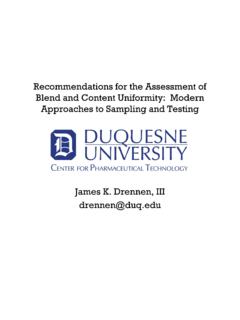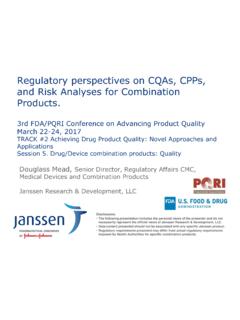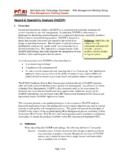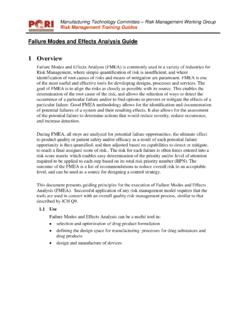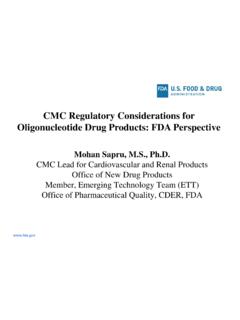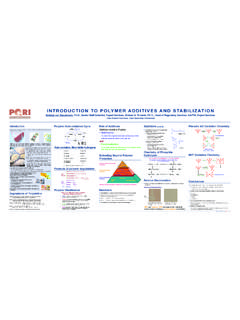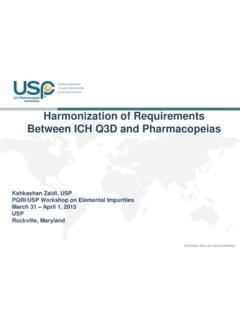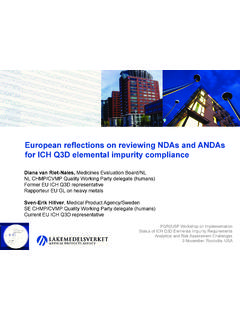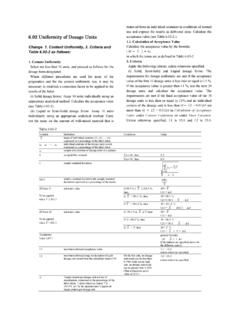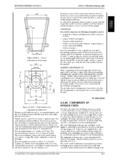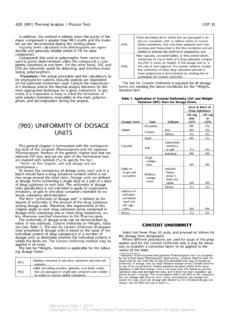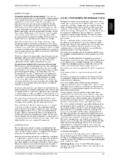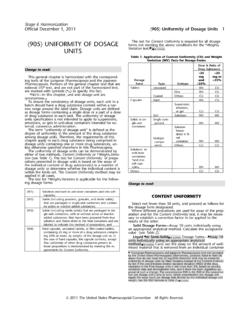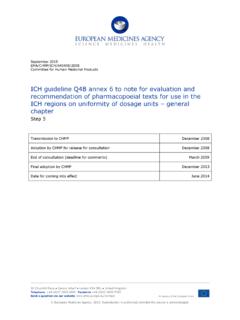Transcription of THE USE OF STRATIFIED SAMPLING OF BLEND AND …
1 Final PQRI BLEND uniformity Working Group Recommendation to FDA December 20, 2002 Page 1 of 15 THE USE OF STRATIFIED SAMPLING OF BLEND AND dosage UNITS TO DEMONSTRATE ADEQUACY OF MIX FOR POWDER BLENDS1 I. Scope This proposal is meant to address concerns raised following the issuance of the FDA document Guidance for Industry, ANDAs: BLEND uniformity Analysis, (August 3, 1999) as it relates to filing requirements and post-approval commitments.
2 It applies to both ANDA and NDA solid oral drug products. It does not apply to those drug products where the determination of dosage -form uniformity by weight variation is allowed. This proposal is applicable to active ingredient(s) contained in the BLEND . The approach described in this document is proposed as a means to satisfy the cGMP requirement for in-process testing to demonstrate adequacy of mix, as well as USP compendial requirements for the content uniformity of finished dosage forms. Alternatively, traditionally employed methods (such as the direct SAMPLING and analysis of powder blends, in conjunction with content uniformity testing of finished dosage forms) may continue to be used to satisfy cGMP and compendial testing requirements.
3 Additionally, on-line measurement systems may also be used to demonstrate uniformity ( , NIR measurement of in-process BLEND samples or dosage units). II. Definitions STRATIFIED SAMPLING is the process of selecting units deliberately from various locations within a lot or batch or from various phases or periods of a process to obtain a STRATIFIED SAMPLING of the BLEND and dosage units specifically targets locations either in the blender or throughout the compression/filling operation, which have a higher risk of producing failing content uniformity results.
4 Potency refers to the content of drug substance (also referred to as active ingredient) present in the tested dosage unit . Alternate methods of analysis for the content of drug substance, such as a quantitative spectrophotometric method, may be used in place of a more elaborate HPLC method. To weight correct is to adjust the dosage unit potency result to eliminate the unit weight effect. This method is used to demonstrate BLEND uniformity using dosage unit results. For example, a tablet with potency of mg and weight 1 The proposals in this document assume that an on-line, in-process measurement system is not currently available for demonstrating BLEND uniformity ( , on-line NIR measurement of in-process BLEND or dosage units).
5 2 Glossary and Tables for Statistical Quality Control, ASQC Quality Press, copyright 1983. Final PQRI BLEND uniformity Working Group Recommendation to FDA December 20, 2002 Page 2 of 15 of 98 mg = 98 = mg/mg. Label claim is 20 mg per each 100 mg tablet, so the weight corrected result is * 100 = 99% of target BLEND potency. Unless otherwise specifically stated, all dosage unit potencies are to be weight corrected prior to evaluating the acceptance criteria described in this document.
6 All weight-corrected potencies are to be expressed as a percentage of the BLEND target concentration. Calculations to satisfy compendial testing requirements and the criteria for individual dosage units stated in Attachment 1 are not weight corrected. Further, the potencies are expressed as a percentage of the label concentration. Absolute as used to define the acceptable range (+/- 10%) in which individual BLEND sample values must fall is independent of the value of the mean. For example, if the mean of all BLEND samples is , the absolute range is 85-105%, (not 95 +/- ).
7 ANDA Exhibit Batches refer to any batch submitted in support of an ANDA. This includes bioequivalence, test and commercial production batches of a drug product. Compendial testing mentioned in this document refers to USP <905> uniformity of dosage Units, by Content uniformity . RSD is relative standard deviation. RSD = [(standard deviation)/(mean)] x 100% III. Background In response to concerns by ANDA applicants regarding inconsistency in review chemists recommendations, the FDA published a draft guidance in August The guidance proposed routine BLEND sample analysis on commercial batches for ANDA products when USP Content uniformity testing is required on the product.
8 As a result of industry feedback on this draft guidance, a primary goal of the Product Quality Research Institute (PQRI) BLEND uniformity Working Group (BUWG) was to address the gap between scientific principles and the regulatory policy stated in this document. In September 2000, the working group sponsored a workshop on BLEND uniformity . At the conclusion of the workshop, it was recognized that limitations in current SAMPLING technology and subsequent handling (powder segregation) might limit the effectiveness of using BLEND sample analysis to ensure adequacy of blending.
9 Alternative solutions were sought to address the shortcomings of SAMPLING and analyzing blends. The PQRI BUWG felt that any solution should possess the following three qualities: 3 Guidance for Industry, ANDAs: BLEND uniformity Analysis (August 3, 1999), which was subsequently withdrawn by FDA in May 2002. Final PQRI BLEND uniformity Working Group Recommendation to FDA December 20, 2002 Page 3 of 15 1.
10 The test should be simple to perform, maximizing the use of the data. 2. Acceptance criteria should be easy to evaluate and interpret. 3. Acceptance criteria should demonstrate when lack of homogeneity is suspected. In-process dosage unit analysis (of tablet cores, hard gelatin capsules, or other solid dose forms) is proposed as an alternative to routine BLEND sample analysis. Current GMPs state control procedures shall of mixing to assure uniformity and homogeneity. [21 CFR (a)(3)]. dosage unit analysis satisfies this in-process control requirement by indirectly measuring the uniformity of the BLEND by SAMPLING and testing in-process dosage units.
